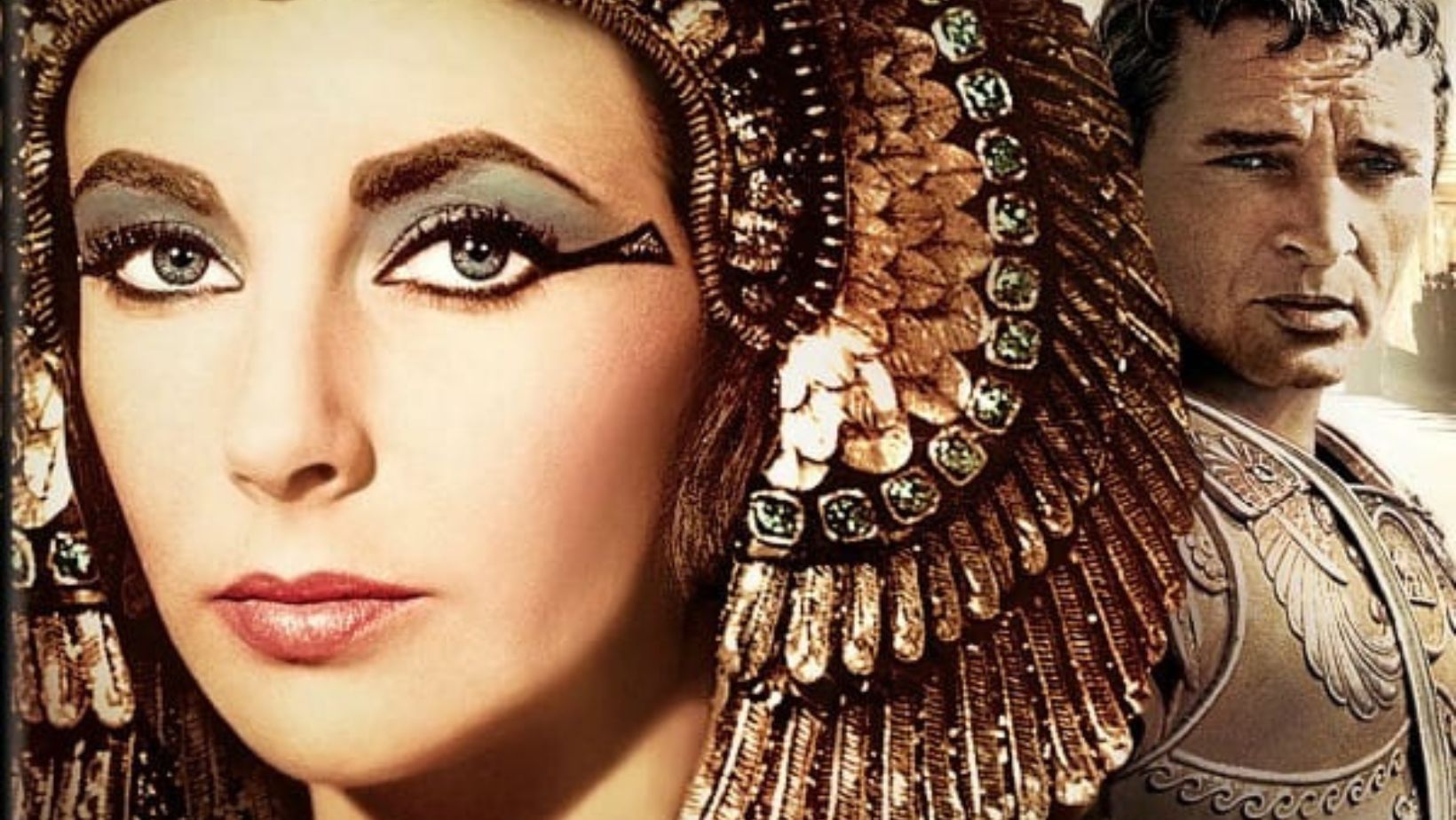Ever wondered about the roots that shaped one of history’s most iconic figures? Yes, we’re talking about Cleopatra – Egypt’s last pharaoh whose allure refuses to fade away. Tracing back Cleopatra’s family tree reveals a tale not just of power and politics but also personal dynamics that influenced an era. It wasn’t all snakes and asps; this journey through her lineage unveils complex relationships entwined with the fate of empires.
Table of Contents:
- Cleopatra VII’s Family Tree
- The Ptolemaic Dynasty
- Cleopatra’s Relationships and Offspring
- The Fall of the Ptolemaic Dynasty
- Exploring Cleopatra’s Family Tree
- Conclusion
Cleopatra VII’s Family Tree: Cleopatra’s Family Tree
Cleopatra VII, the last active ruler of the Ptolemaic Kingdom of Egypt, was born into a complex family tree filled with intrigue, incest, and power struggles. Her lineage was a tangled web of Macedonian Greek ancestry, with a dash of uncertainty about potential Egyptian blood.
Cleopatra’s Parents
Cleopatra’s father was Ptolemy XII Auletes, a descendant of Ptolemy I Soter, one of Alexander the Great’s generals. Her mother’s identity is less certain, but she was likely Cleopatra V Tryphaena, who may have been Ptolemy XII’s sister or cousin.
Cleopatra’s Siblings
Cleopatra VII had several siblings, including her older sister Berenice IV, younger sister Arsinoe IV, and younger brothers Ptolemy XIII and Ptolemy XIV. The Ptolemaic dynasty was known for its incestuous marriages, so it’s no surprise that Cleopatra’s family tree is a bit tangled.
Cleopatra’s Children: Cleopatra’s Family Tree
Cleopatra had three children: Caesarion (Ptolemy XV), her son with Julius Caesar, and twins Alexander Helios and Cleopatra Selene II, her children with Mark Antony. Tragically, Caesarion was executed by Octavian, while the twins were spared and raised in Rome.
The Ptolemaic Dynasty: Cleopatra’s Family Tree
The Ptolemaic dynasty ruled Egypt from 305 to 30 BCE, following Alexander the Great’s death. The dynasty was marked by a complex web of marriages, murders, and power struggles that make for a fascinating, if not convoluted, family tree.
The Ptolemaic dynasty was founded by Ptolemy I Soter, one of Alexander the Great’s most trusted generals. After Alexander’s death, Ptolemy took control of Egypt and established himself as pharaoh, beginning a dynasty that lasted nearly 300 years.
Notable Ptolemaic Rulers
Some of the most notable Ptolemaic rulers include Ptolemy I Soter, Ptolemy II Philadelphus, and of course, Cleopatra VII. These rulers were known for their military prowess, patronage of the arts and sciences, and their complex web of political marriages and alliances.
Incestuous Marriages in the Ptolemaic Dynasty
One of the most striking features of the Ptolemaic dynasty was the prevalence of incestuous marriages. Ptolemaic rulers often married their siblings or close relatives to keep power within the family and maintain their Macedonian Greek bloodline. This practice led to a complex and often confusing family tree.
Cleopatra’s Relationships and Offspring: Cleopatra’s Family Tree
Cleopatra VII is perhaps best known for her romantic relationships with two of the most powerful men of her time: Julius Caesar and Mark Antony. These relationships not only shaped her personal life but also had far-reaching political consequences.
Cleopatra first met Julius Caesar in 48 BCE when he arrived in Egypt during the Alexandrian War. Despite their age difference (Cleopatra was 21, Caesar was 52), they became lovers and allies. Cleopatra later gave birth to Caesar’s son, Caesarion, though Caesar never publicly acknowledged the boy as his heir.
Cleopatra and Mark Antony

After Caesar’s assassination in 44 BCE, Cleopatra aligned herself with Mark Antony, one of Caesar’s former generals. The two fell in love and had three children together: twins Alexander Helios and Cleopatra Selene II and another son, Ptolemy Philadelphus. Their relationship was as much political as it was romantic, and the couple is often portrayed as a power duo.
Cleopatra’s Son Caesarion: Cleopatra’s Family Tree
Caesarion, also known as Ptolemy XV, was Cleopatra’s eldest son and her only child with Julius Caesar. After Caesar’s assassination, Cleopatra promoted Caesar as Caesar’s true heir, putting him in direct conflict with Octavian (later Augustus). When Octavian emerged victorious in the Final War of the Roman Republic, he had Caesarion executed, effectively ending the Ptolemaic dynasty.
The Fall of the Ptolemaic Dynasty: Cleopatra’s Family Tree
The Ptolemaic dynasty, which had ruled Egypt for nearly 300 years, came to a dramatic end with the death of Cleopatra VII in 30 BCE. The dynasty’s fall was marked by a series of conflicts with the Roman Empire, culminating in the famous Battle of Actium.
Cleopatra’s relationships with Julius Caesar and Mark Antony put her in direct conflict with Rome, particularly with Octavian, Caesar’s adopted son and heir. As tensions between Antony and Octavian escalated, Cleopatra found herself caught in the middle of a power struggle that would ultimately lead to her downfall.
The Battle of Actium: Cleopatra’s Family Tree
The Battle of Actium fought on September 2, 31 BCE, was a decisive naval engagement between the forces of Octavian and the combined forces of Cleopatra and Mark Antony. Octavian’s victory at Actium marked the end of the Ptolemaic dynasty and the beginning of Roman rule in Egypt.
The Deaths of Cleopatra and Mark Antony

After their defeat at Actium, Cleopatra and Mark Antony fled to Alexandria. As Octavian’s forces closed in on the city, the couple took their own lives. Cleopatra, according to legend, died by the bite of an asp, while Antony fell on his sword. Their deaths marked the end of an era and the beginning of a new one under Roman rule.
Exploring Cleopatra’s Family Tree: Cleopatra’s Family Tree
Cleopatra’s family tree is a fascinating subject that continues to captivate historians and the public alike. Thanks to modern technology and ongoing research, we now have more tools than ever to explore this complex web of relationships.
Online Resources for Cleopatra’s Family Tree
There are numerous online resources available for those interested in exploring Cleopatra’s family tree. Websites like Ancient Egypt Online and Geni.com offer detailed family trees and biographical information on key members of the Ptolemaic dynasty.
For those who prefer a more hands-on approach, creating a printable family tree can be a fun and educational project. Start by gathering information on the key members of Cleopatra’s family, then use a family tree template or software to organize the data into a visually appealing format.
Analyzing Relationships within Cleopatra’s Family
Cleopatra’s family tree is a complex web of relationships that can be analyzed from multiple angles. By examining the political, social, and cultural context of these relationships, we can gain a deeper understanding of the Ptolemaic dynasty and its place in history. However, it’s important to approach this analysis with a critical eye and to be mindful of the gaps and uncertainties in the historical record.
Key Takeaway: Cleopatra’s Family Tree
Dive into the complex, intriguing world of Cleopatra VII’s family tree, filled with power struggles and incestuous marriages. Discover her Macedonian Greek roots, notable relationships with Julius Caesar and Mark Antony, and the dramatic fall of the Ptolemaic dynasty.
Conclusion: Cleopatra’s Family Tree
In wrapping up our exploration, it becomes clear how deeply woven Cleopatra’s family tree is within the fabric of ancient history. Her tale isn’t just her own—it reaches out, touching hearts and shaping views through time, leaving its mark on the past’s triumphs as well as how we see things today. So next time you hear mention of Cleopatra or see her depicted on screen, remember there’s a whole forest behind that single majestic tree—roots running deep into humanity’s shared saga.

